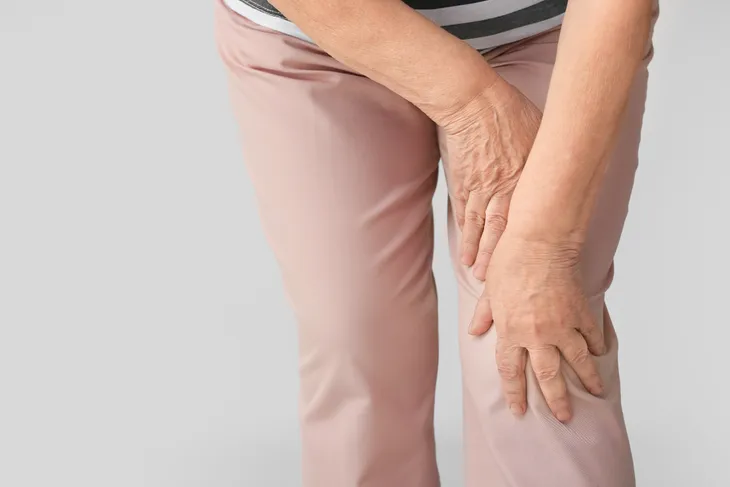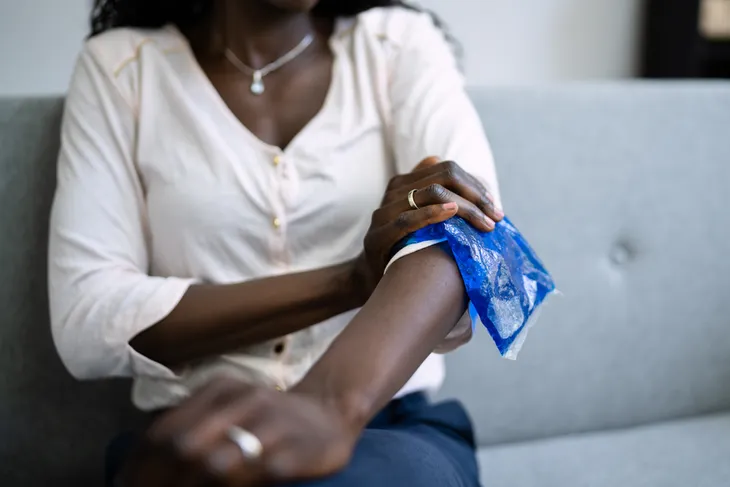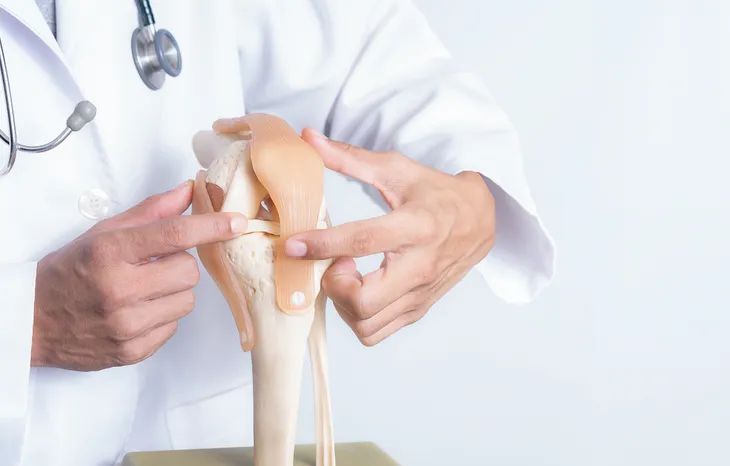- Joint pain is when one or more joints become painful due to injury, infection, inflammation, or some other cause.
- Pinpointing the exact cause can be difficult, which is why you should always address your joint pain with a medical professional.
- Be on the lookout for joint tenderness, stiffness, or swelling as these can be key signs that something is wrong with your joint.
- If you’re experiencing joint pain from a serious injury, if the joint appears deformed or immobile, or if it’s accompanied by a fever, seek emergency medical care.
Joints are where two bones meet and they play an integral role in helping your skeleton move. Without joints, movements would be impossible. This is why good joint health is so important. But as much as we try to avoid it, sometimes joints can become painful.
Joint pain isn’t only painful and irritating, it can be debilitating too, affecting your daily activities. Unfortunately, there are many causes of joint pain which can make pinpointing the source a challenge. If you’re experiencing joint pain, get it checked out by a doctor right away because early intervention is key. In the meantime, let’s take a look at all the possible causes of joint pain plus symptoms to look out for and the possible courses of treatment.
What Is Joint Pain?
Joint pain is when one or more joints become painful due to injury, infection, inflammation, or some other cause. And it’s more common than you may think. In fact, WebMD says one national survey found that one-third of adults reported having joint pain in the last 30-days. It can even become more common as we grow older due to wear and tear.
Joint pain can cause the joint to feel stiff, achy, and sore and some even describe it as a burning or throbbing sensation, explains the Cleveland Clinic. The source also explains that it’s common for joint pain to come and go, feel stiffer in the morning, and loosen up with movement and activity. However, in some cases, too much activity can make the pain worse.
Severe joint pain, on the other hand, can interfere with daily activities. It may affect the function of the joint and decrease its mobility.
What Causes Joint Pain?
Now that you have a better understanding of what joint pain is and how it can affect you, you might be wondering what causes it to develop in the first place. Unfortunately, there are many causes of joint pain. It could be caused by an injury or be a sign of inflammation, or it could be a symptom of a disease.
Pinpointing the exact cause can be difficult, which is why you should always address your joint pain with a medical professional. Let’s take a closer look at some of these common causes next.
Joint Pain From Injury
Injury is one of the most common causes of joint pain. And it doesn’t just include hard impact injuries that cause fractures or sprains. Injuries can result from excessive use too.
Medical News Today says that one common source of knee pain is from damage to the anterior cruciate ligament (ACL). While an ACL injury can happen to anyone, they’re more common in individuals who play sports like soccer, football, and basketball. If you exercise regularly or play sports and are suffering joint pain, there’s a strong possibility that is the root cause.
Joint Pain From Disease
Joint pain can also develop due to diseases, such as lupus. Lupus is a chronic disease that develops when your body’s immune system attacks its own tissues and organs, also known as an autoimmune disease. The inflammation caused by lupus can not only affect your heart, lungs, and kidneys but it can also affect your joints too. Medical News Today also notes that more than half of individuals who develop lupus experience joint pain as their first symptom.
Lupus isn’t the only disease that causes joint pain though, there are many others. The Mayo Clinic says bone cancer, leukemia, hypothyroidism, and Lyme Disease are also possible causes of joint pain.
Joint Pain From Arthritis
Another common source of joint pain is arthritis. In fact, the Centers for Disease Control and Prevention (CDC) says that nearly half of adults with arthritis have persistent pain, while one in four reports experiencing severe joint pain.
The Arthritis Foundation notes that there are more than 100 different types of arthritis and related diseases. Some of the most common types are osteoarthritis, rheumatoid arthritis, psoriatic arthritis, fibromyalgia, and gout. Each form of arthritis can have its own cause, making a proper diagnosis even more important.
Risk Factors
While anyone can develop joint pain, some people may have a greater risk due to certain factors. For starters, the Cleveland Clinic says individuals who have had previous injuries in a joint are more likely to experience joint pain. As are individuals who repeatedly use or overuse a muscle.
Having arthritis or another chronic medical condition can also increase your risk for joint pain. The source also notes that suffering from depression, anxiety, or chronic stress may also lead to joint pain. Poor health and being overweight are risk factors too. Finally, age is also a factor as years of wear and tear can lead to joint pain.
Common Signs and Symptoms of Joint Pain
Signs and symptoms will vary depending on the underlying cause, however, there are common symptoms that often accompany joint pain. Medical News Today says to be on the lookout for joint tenderness, stiffness, or swelling as these can be key signs that something is wrong with your joint.
If your joint becomes weak or if you notice a decrease in mobility, this could also be a sign of joint trouble. Joint pain shouldn’t be ignored because if left untreated it may lead to increased pain or mobility problems. If the pain persists for a few days or more, have it checked by a doctor.
When Is Joint Pain an Emergency?
While all joint pain should be looked at by a doctor, some cases are an emergency and need to be looked at immediately. According to Healthline, you should seek emergency medical care if you’re experiencing joint pain from a serious injury or if the joint appears deformed.
If you develop sudden swelling or if the joint becomes immobile then you should also seek emergency medical care. It’s also an emergency if you have severe joint pain, if the pain is accompanied by a fever, or if it’s preventing you from walking normally.
Diagnosing Joint Pain
If you’re experiencing joint pain, book an appointment with your doctor. They’ll likely start by reviewing your medical history, and perform a physical exam. Be sure to inform your doctor with as much information as possible including all the symptoms you’re experiencing, when they started, and any other details you can think of.
During the physical exam, your doctor will likely check the range of motion in your joint. Medical News Today says your doctor may also require blood tests to check for things like uric acid, rheumatoid factor, antinuclear antibodies, C-reactive protein, and erythrocyte sedimentation rate (ESR). Additional imaging tests (such as X-ray, MRI, CT scans, and ultrasounds) may also be necessary to confirm a diagnosis.
How to Treat Joint Pain
Treatment will vary depending on the cause which makes a diagnosis so important. That said, doctors often prescribed medication to help relieve the pain. If the joint pain is caused by an infection they may prescribe antibiotics.
Your doctor may also refer you to a physical therapist for rehabilitation. At-home remedies and lifestyle adjustments may also help you manage the pain and improve your condition. In severe cases, surgery may be necessary. Let’s take a closer look at some of these treatment options next.
Home Remedies
First, we want to point out that you should never self-diagnose and try to treat the problem yourself. Always address joint pain with a medical professional. If the joint pain is caused by a minor injury, your doctor may recommend at-home treatment, such as the RICE method. According to Medical News Today, RICE stands for:
- Rest: Avoid using the injured area.
- Ice: Applying ice or frozen vegetables to the injured area. Just be sure to wrap the ice in cloth as you don’t want it touching the skin directly.
- Compression: Wrapping the injured area in a bandage to provide support, reduce blood flow, and reduce swelling.
- Elevation: Keeping the injured area above the heart to reduce swelling.
Lifestyle Changes
Some causes of joint pain don’t have a cure, such as chronic conditions like osteoarthritis (OA) and rheumatoid arthritis (RA). Healthline says while there isn’t a treatment plan that will completely eliminate joint pain or keep it from returning, there are lifestyle adjustments that can help you manage the pain.
For starters, the source says staying physically active may help. Stretching before exercise is also an effective way to maintain the range of motion in your joints. It’s also important to maintain a healthy weight as access weight can add stress to the joints. If you have a chronic condition that causes joint pain, talk to your doctor to find out what other lifestyle changes you can make to help improve your symptoms.
Medical Treatment
Medical treatment will vary depending on the underlying cause but one potential route is an osteotomy. Verywell Health explains that it involves “cutting and reshaping bones to ease pressure on a joint.” This treatment may help delay the need for a joint replacement.
Your doctor may also recommend surgery. Although, this is typically only recommended for advanced cases or if other treatment options fail to ease the pain. One surgery option is called an arthroscopy in which “a surgeon makes two or three small incisions in the flesh over the joint and gets into the joint using an arthroscope, or a thin, flexible, fiberoptic instrument, to repair cartilage or remove bone chips in or near the joint,” explains the Cleveland Clinic.
The other surgical option is a complete joint replacement. This can be done to replace hip, knee, or shoulder joints. During this surgery, part of the bone is removed and replaced with an artificial joint made from metal or plastic.
















